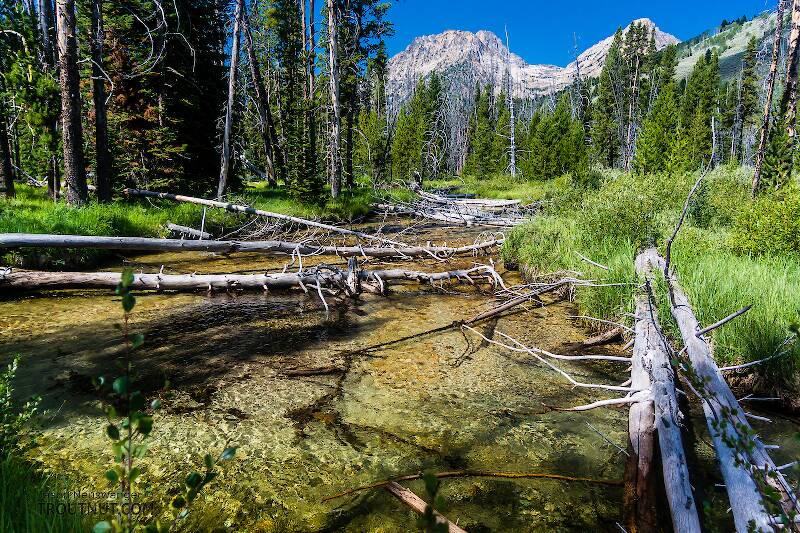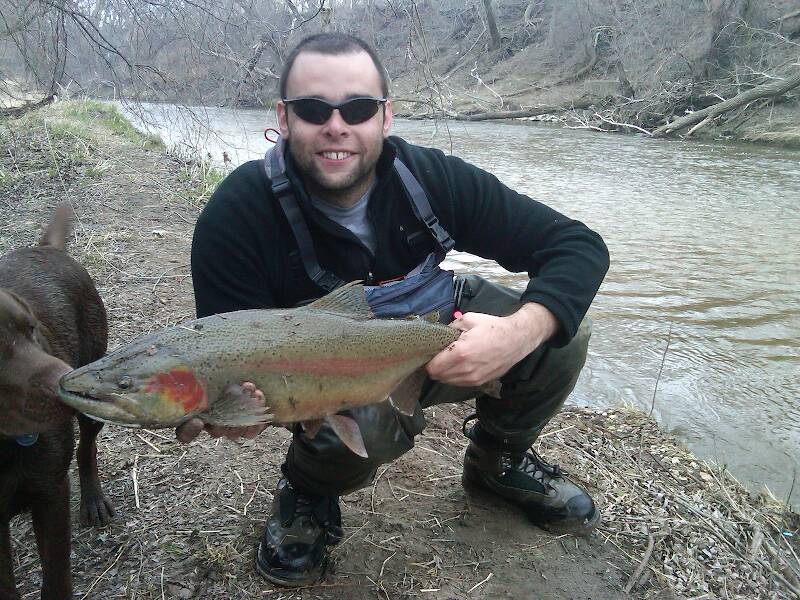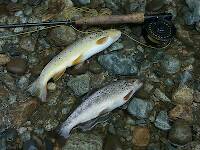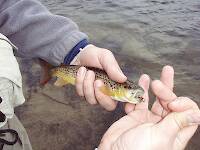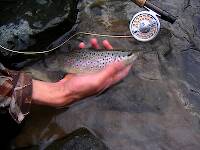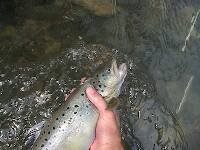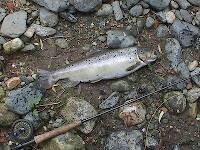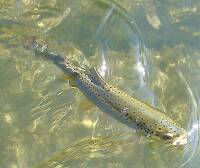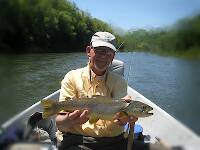
Blue-winged Olives
Baetis
Tiny Baetis mayflies are perhaps the most commonly encountered and imitated by anglers on all American trout streams due to their great abundance, widespread distribution, and trout-friendly emergence habits.
Featured on the forum

Troutnut is a project started in 2003 by salmonid ecologist Jason "Troutnut" Neuswanger to help anglers and
fly tyers unabashedly embrace the entomological side of the sport. Learn more about Troutnut or
support the project for an enhanced experience here.
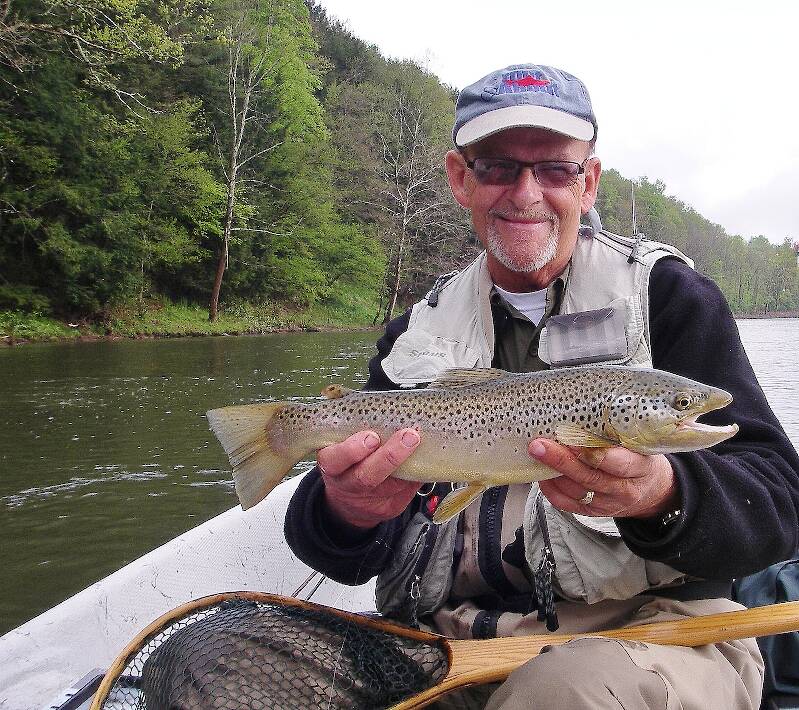
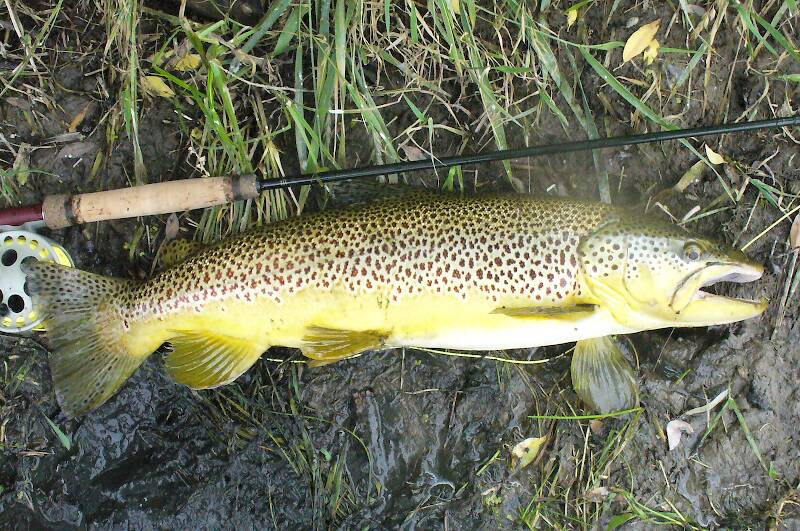
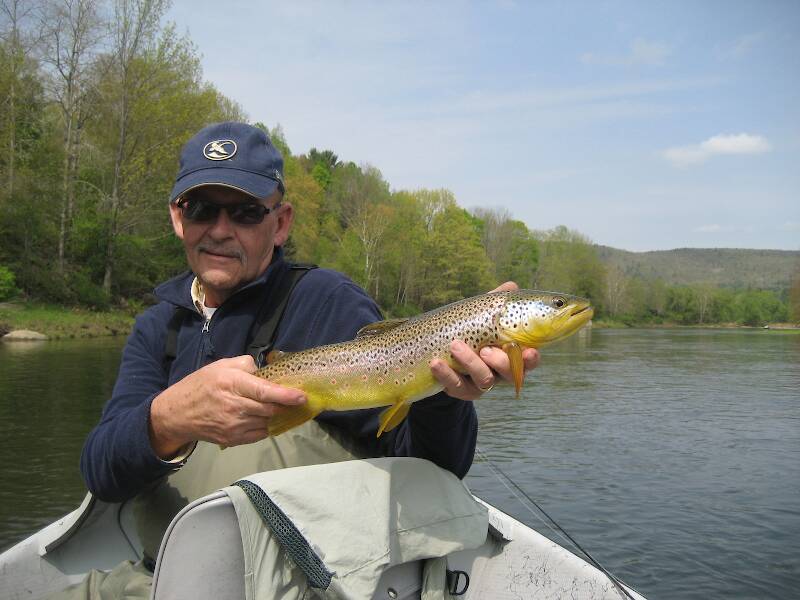
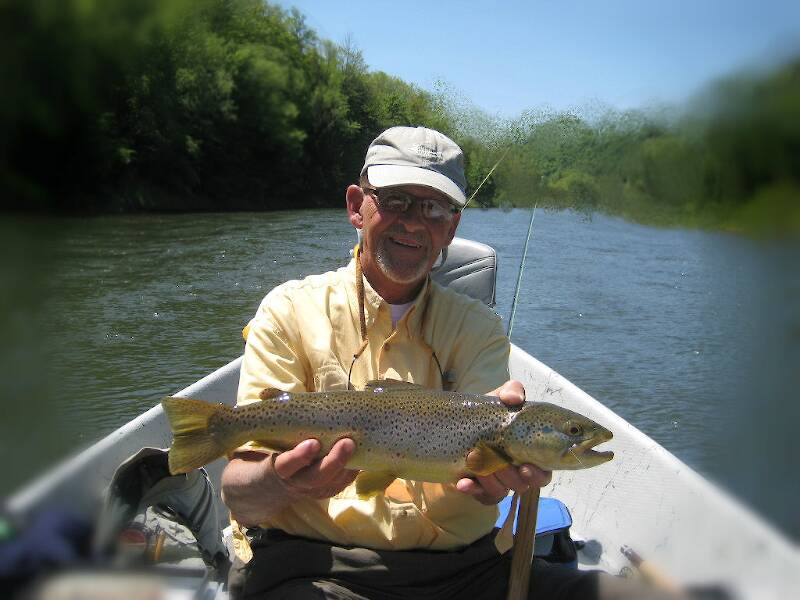
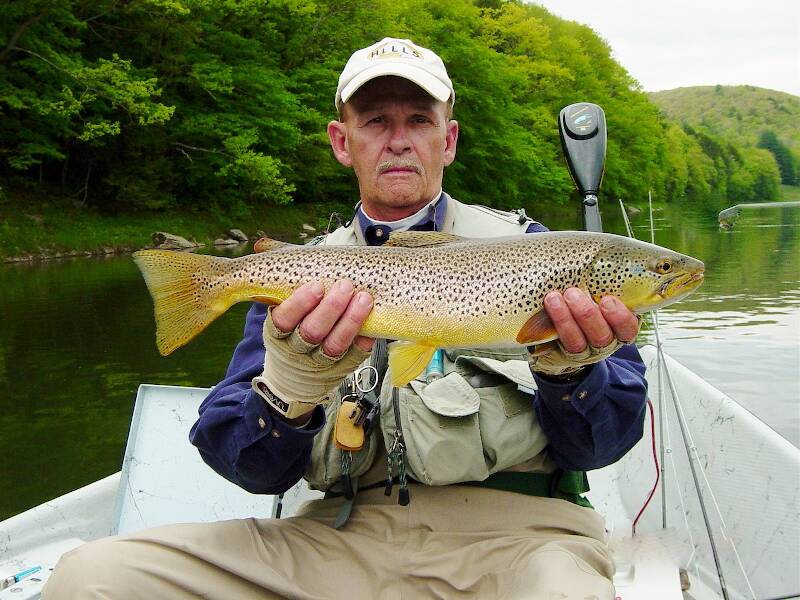
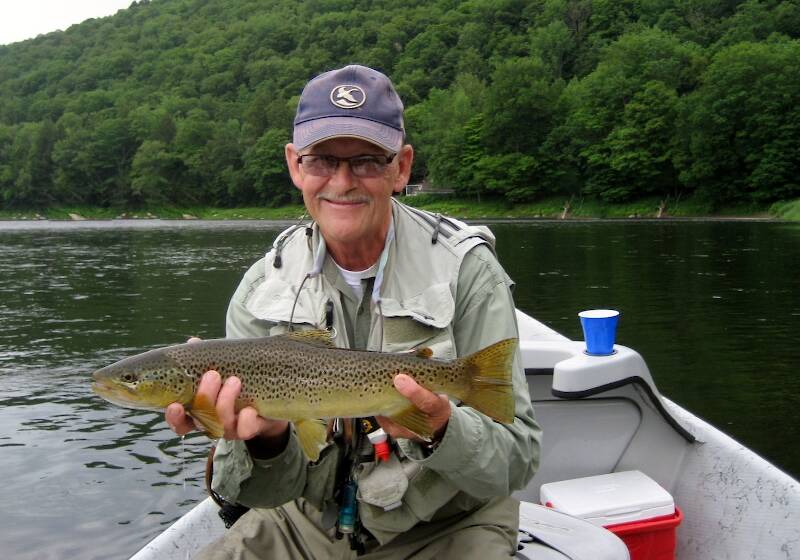
Wbranch on Jan 8, 2013January 8th, 2013, 6:53 am EST
Here are a few fish caught within ten miles of my cabin. Most of the time I'm fishing by myself so there is no one there to take my picture. This is just a few of the big fish I catch every year.
Catskill fly fisher for fifty-five years.
Kschaefer3 on Jan 8, 2013January 8th, 2013, 7:17 am EST
Very nice fish! Were these all caught on dries?
Wbranch on Jan 8, 2013January 8th, 2013, 7:26 am EST
Yes, every fish was rising and caught on a dry fly and no tippet heavier than 5X.
Catskill fly fisher for fifty-five years.
Oldredbarn on Jan 8, 2013January 8th, 2013, 8:01 am EST
Nice fish there Matt! My favorite is the smile on the face. :)
Maybe you could tell me a bit about those fish...There seems to be two different "sub-species" there. The spotting seems to be different...The first two fish have spotting different than the third down...The third one down looks more like the Browns in my Au Sable in Michigan...All very lovely fish sir.
I have never fished the "main stem" but my uninformed quess would be that you are tied up to the dock in front of your cabin...:) I like the honesty, as well, when you wrote, "I just flipped it over the side and he came up and ate it". Some days the fish are just turned on...I remember one early morning, after I drove up from Detroit, when I beat everyone to the river and caught a small Brook almost on my first cast and as I was unhooking him and letting him go the fly got loose, floated downstream a bit, and another Brookie smacked it...I was smiling then too thinking, "It's going to be a nice day!"
The one that "ate an Apple Caddis" is my fave from the above...Looks like a springtime Brown that still looks a little lean from winter...Maybe I like it cause it looks so much like an Au Sable Brown?
Fond of the dry-fly myself :).
Thanks!
Spence
Maybe you could tell me a bit about those fish...There seems to be two different "sub-species" there. The spotting seems to be different...The first two fish have spotting different than the third down...The third one down looks more like the Browns in my Au Sable in Michigan...All very lovely fish sir.
I have never fished the "main stem" but my uninformed quess would be that you are tied up to the dock in front of your cabin...:) I like the honesty, as well, when you wrote, "I just flipped it over the side and he came up and ate it". Some days the fish are just turned on...I remember one early morning, after I drove up from Detroit, when I beat everyone to the river and caught a small Brook almost on my first cast and as I was unhooking him and letting him go the fly got loose, floated downstream a bit, and another Brookie smacked it...I was smiling then too thinking, "It's going to be a nice day!"
The one that "ate an Apple Caddis" is my fave from the above...Looks like a springtime Brown that still looks a little lean from winter...Maybe I like it cause it looks so much like an Au Sable Brown?
Fond of the dry-fly myself :).
Thanks!
Spence
"Even when my best efforts fail it's a satisfying challenge, and that, after all, is the essence of fly fishing." -Chauncy Lively
"Envy not the man who lives beside the river, but the man the river flows through." Joseph T Heywood
"Envy not the man who lives beside the river, but the man the river flows through." Joseph T Heywood
Wbranch on Jan 8, 2013January 8th, 2013, 8:09 am EST
Spence,
I guess there are different strains of wild browns in the Delaware system. Personally I prefer the browns with the red spots inside the yellow halos bnut heck I'm not complaining about their less colored brethren. I have noticed though that most of the browns I catch on the main stem do not have the red spots/yellow halos but are pretty much just evenly colored with black spots on butter colored flanks.
One trait I just love on bigger browns is that blue spot on the gill cover.
I guess there are different strains of wild browns in the Delaware system. Personally I prefer the browns with the red spots inside the yellow halos bnut heck I'm not complaining about their less colored brethren. I have noticed though that most of the browns I catch on the main stem do not have the red spots/yellow halos but are pretty much just evenly colored with black spots on butter colored flanks.
One trait I just love on bigger browns is that blue spot on the gill cover.
Catskill fly fisher for fifty-five years.
Oldredbarn on Jan 8, 2013January 8th, 2013, 8:17 am EST
I wouldn't be complaining either! :) It just seems that the spotting seems more like an "x" than a spot...The fish you mention are similar to the Au Sable trout...I think they are from the so-called "German Browns" of old...The "x" spotted ones I'm not so sure...Still very healthy, wild looking, trout.
Spence
Spence
"Even when my best efforts fail it's a satisfying challenge, and that, after all, is the essence of fly fishing." -Chauncy Lively
"Envy not the man who lives beside the river, but the man the river flows through." Joseph T Heywood
"Envy not the man who lives beside the river, but the man the river flows through." Joseph T Heywood
Kschaefer3 on Jan 8, 2013January 8th, 2013, 9:01 am EST
Yes, every fish was rising and caught on a dry fly and no tippet heavier than 5X.
Impressive! I would love to learn to fish dries that well. Are you able to watch the riseforms and determine the larger fish?
I wouldn't complain about catching any of those fish! Very healthy and bigger than any I have ever caught.
Wbranch on Jan 8, 2013January 8th, 2013, 9:35 am EST
Kyle,
"Are you able to watch the riseforms and determine the larger fish?"
Let me put it this way; you can usually spot a really good fish because often when they rise they actually "push water" as we call it. Not only is the riseform impressive but it is like a mini tsunami! When I see it I still get very excited. Now that being said sometimes with smaller insects on the surface a larger fish will rise much more subtly. This is especially true when the fish are suspended near the surface and in quieter pools. They just tip up on the bug and inhale it without very much commotion.
I'm pretty good at recognizing the rise forms of smaller trout, say 11" and smaller, and I won't even cast to them - unless it's a tough day LOL and then I even enjoy catching a chub.
"Are you able to watch the riseforms and determine the larger fish?"
Let me put it this way; you can usually spot a really good fish because often when they rise they actually "push water" as we call it. Not only is the riseform impressive but it is like a mini tsunami! When I see it I still get very excited. Now that being said sometimes with smaller insects on the surface a larger fish will rise much more subtly. This is especially true when the fish are suspended near the surface and in quieter pools. They just tip up on the bug and inhale it without very much commotion.
I'm pretty good at recognizing the rise forms of smaller trout, say 11" and smaller, and I won't even cast to them - unless it's a tough day LOL and then I even enjoy catching a chub.
Catskill fly fisher for fifty-five years.
Martinlf on Jan 8, 2013January 8th, 2013, 4:14 pm EST
Spence,
I think Lloyd has a pretty good description of the red spotted browns, and he and others link them to the Von Behr strain, some of which came from Germany. I've heard others call the black spotted fish Loch Levans, and heard them linked to Britain. Recently a fellow who has fished the Delaware almost as long as Matt told me the black spotted fish might be the Seeforellen strain. Ultimately, many different strains of browns from many locations have been stocked in America and in larger waters such as the Delaware there may be a good bit of mixing of the original stockings. Spawning conditions may be more favorable for the black spotted fish in the main stem tribs, while upper Delaware browns, which, seem to move around less than main stem fish, which must find cold water in the summer, may stick somewhat together during spawning, keeping the color strains separate enough to make each identifiable. Oh, and some browns get flushed out of the reservoirs--and the streams that feed them are stocked. Anyway, this is my current, more or less uninformed understanding. Matt, what's your understanding?
I think Lloyd has a pretty good description of the red spotted browns, and he and others link them to the Von Behr strain, some of which came from Germany. I've heard others call the black spotted fish Loch Levans, and heard them linked to Britain. Recently a fellow who has fished the Delaware almost as long as Matt told me the black spotted fish might be the Seeforellen strain. Ultimately, many different strains of browns from many locations have been stocked in America and in larger waters such as the Delaware there may be a good bit of mixing of the original stockings. Spawning conditions may be more favorable for the black spotted fish in the main stem tribs, while upper Delaware browns, which, seem to move around less than main stem fish, which must find cold water in the summer, may stick somewhat together during spawning, keeping the color strains separate enough to make each identifiable. Oh, and some browns get flushed out of the reservoirs--and the streams that feed them are stocked. Anyway, this is my current, more or less uninformed understanding. Matt, what's your understanding?
"He spread them a yard and a half. 'And every one that got away is this big.'"
--Fred Chappell
--Fred Chappell
Wbranch on Jan 8, 2013January 8th, 2013, 6:18 pm EST
" Matt, what's your understanding?"
I agree with what Louis has presented. He has far more data on the subject than I do but it sounds good to me.
I agree with what Louis has presented. He has far more data on the subject than I do but it sounds good to me.
Catskill fly fisher for fifty-five years.
Entoman on Jan 9, 2013January 9th, 2013, 3:49 pm EST
I think you have it right, Louis. I believe the reason the two strains are colored so differently is because the Scottish Loch (Lake) Leven fish came from a rocky lake environment with little weed growth so they adapted with a less colorful coat. The more colorful German transplants were stream inhabitants. Most salmonids adapt to their environments in pretty much the same way, given enough time. Especially rainbows.
It seems the two forms are breeding separately in Matt's home waters because they seem to be staying pretty distinct and the reasons you mention may be the cause. Sounds plausible to me that they would have different spawning habits, perhaps as part of their ancestral make-up? It will be interesting to see how long this holds up. In CA I used to catch both types, but I'm seeing less and less with the Scottish gene as the years go by. There is some talk among fisheries biologists of American strains developing (another good reason to avoid plantings where they are already firmly established).
It seems the two forms are breeding separately in Matt's home waters because they seem to be staying pretty distinct and the reasons you mention may be the cause. Sounds plausible to me that they would have different spawning habits, perhaps as part of their ancestral make-up? It will be interesting to see how long this holds up. In CA I used to catch both types, but I'm seeing less and less with the Scottish gene as the years go by. There is some talk among fisheries biologists of American strains developing (another good reason to avoid plantings where they are already firmly established).
"It's not that I find fishing so important, it's just that I find all other endeavors of Man equally unimportant... And not nearly as much fun!" Robert Traver, Anatomy of a Fisherman
Quick Reply
Related Discussions
Topic
Replies
Last Reply
6
Jul 28, 2012
by Entoman
by Entoman
8
Feb 12, 2009
by Troutnut
by Troutnut

